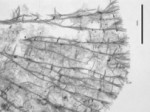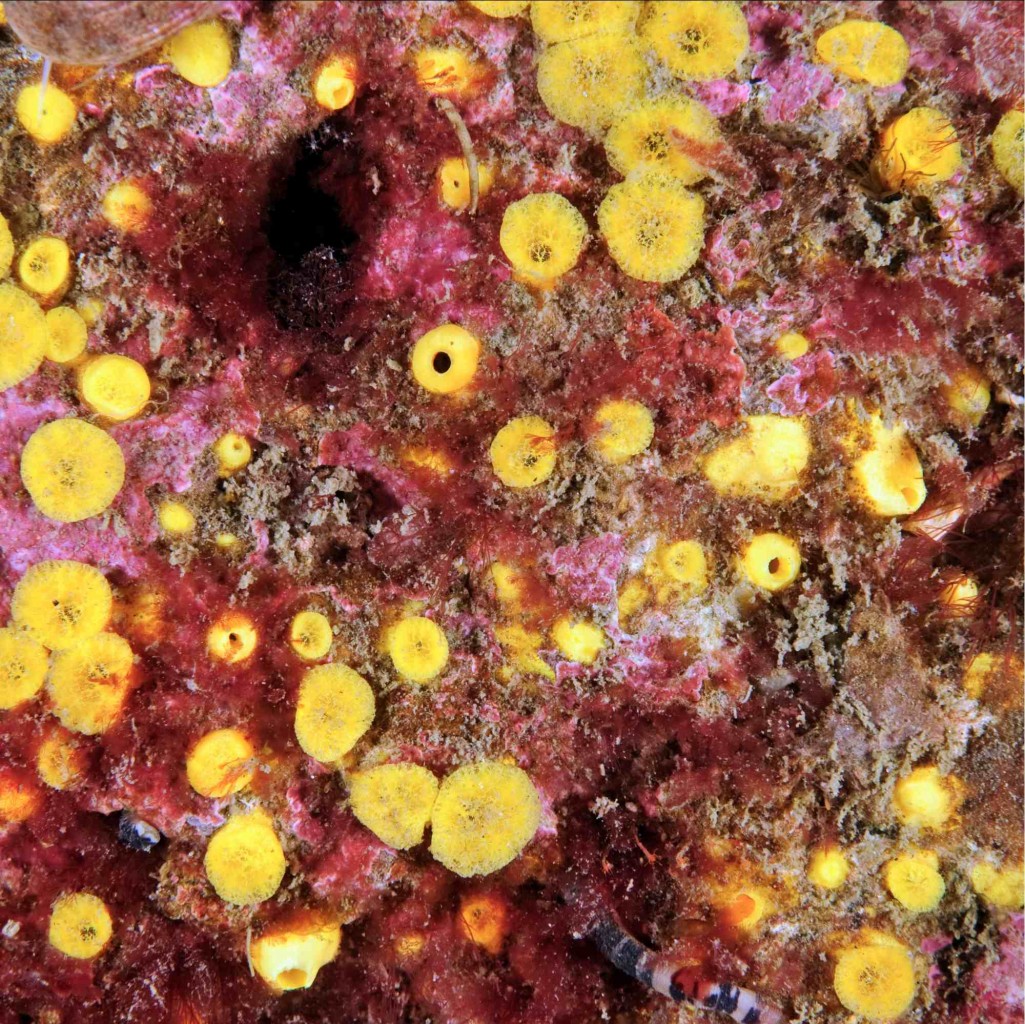Identification of sponge fragment provided by G. Yahel, 15 June 2004, H. M. Reiswig, 26 July 2004 Label: “Iophon? 04.06.03 Race Rocks; Formalin 4%” First conclusion was tentative: Dictyonella sp., and unsatisfying since no species of this genus was known in B.C. waters; structure and body was more like Isodictya, but the rare isochelae spicules of that genus were not found in preliminary analysis. After discussion with Bill Austin on Barkley Sound Cruise, I made a thorough examination of thick sections and found the rare isochela spicules, mainly in the atrial walls (older tissues). I then made new spicule preparations of that region and was able to easily find 50 of the ‘rare’ spicules for measurement.
Revised conclusion (now with high confidence): Isodictya rigida (Lambe, 1893) [Originally Neoesperiopsis rigida; the same in Austin & Ott, 1997 (Kozlov)] Class: Demospongiae; Order: Poecilosclerida; Suborder: Mycalina; Family: Isodictyidae; Genus: Isodictya Bowerbank, 1864
- Genus: Isodictya
- Genus: Isodictya
- Thick section with skeleton
- higher magnification
- General spicule preparation
- Megascleres — Styles 187-228 µm length Isochelae — 19.7-28.5µm length













